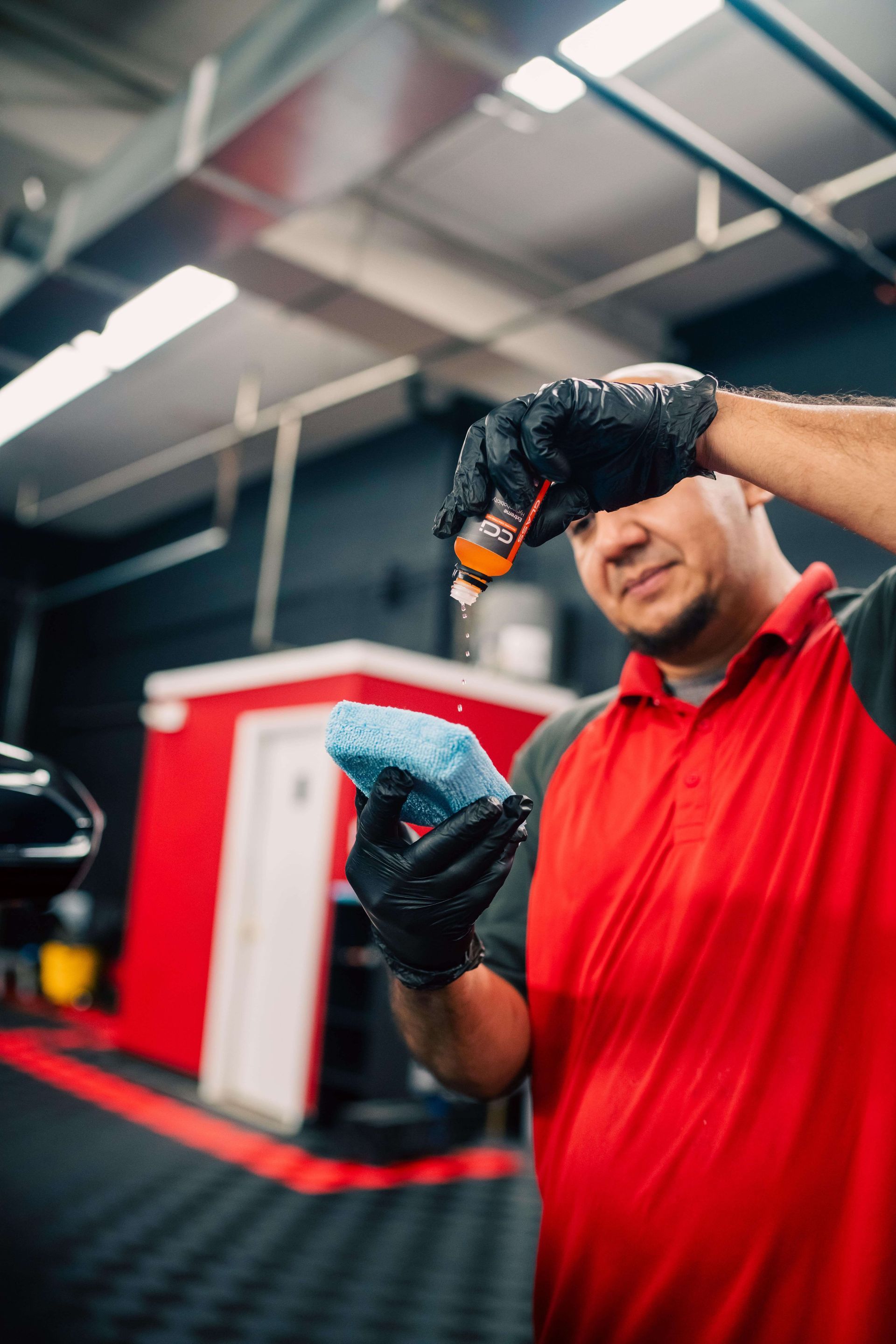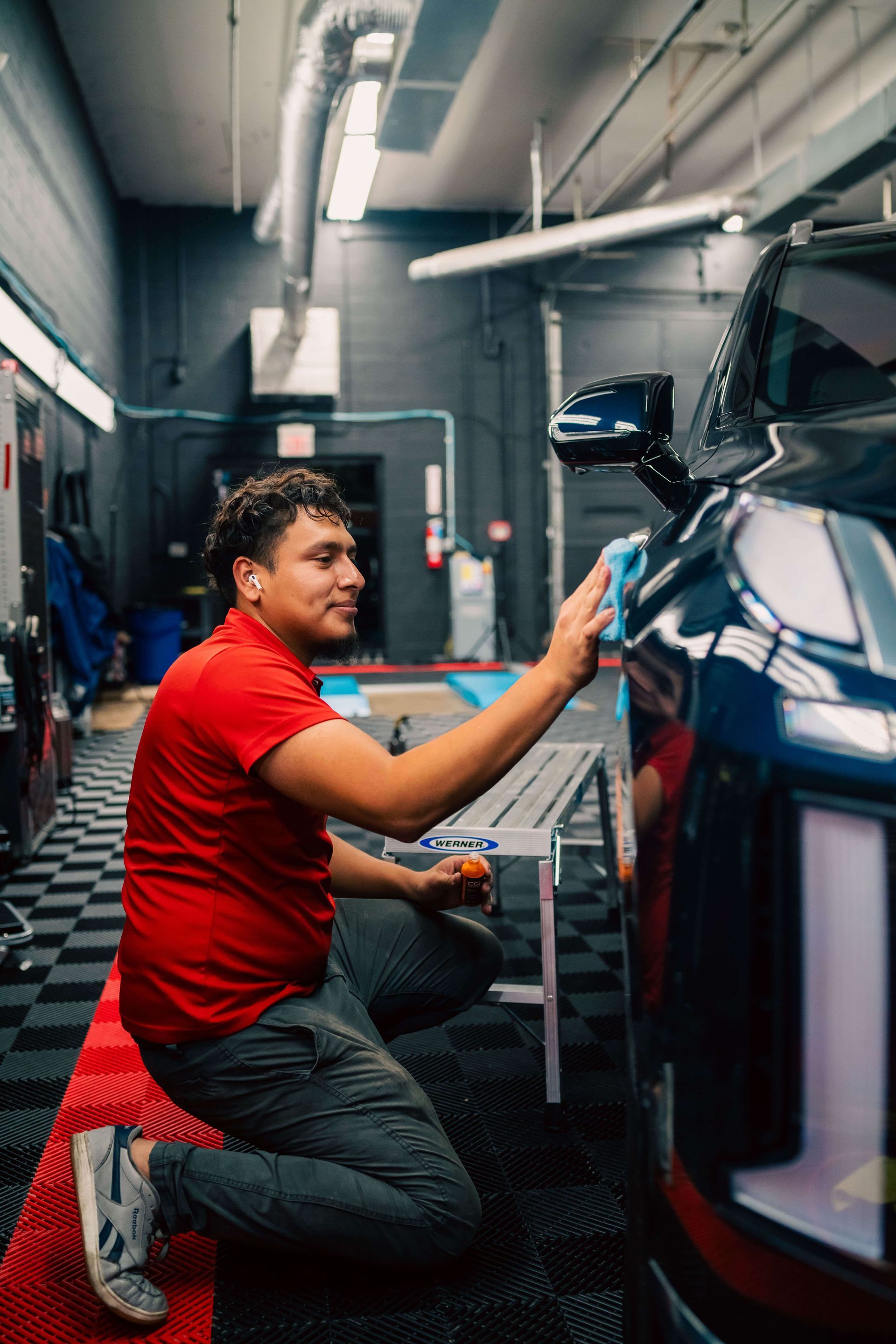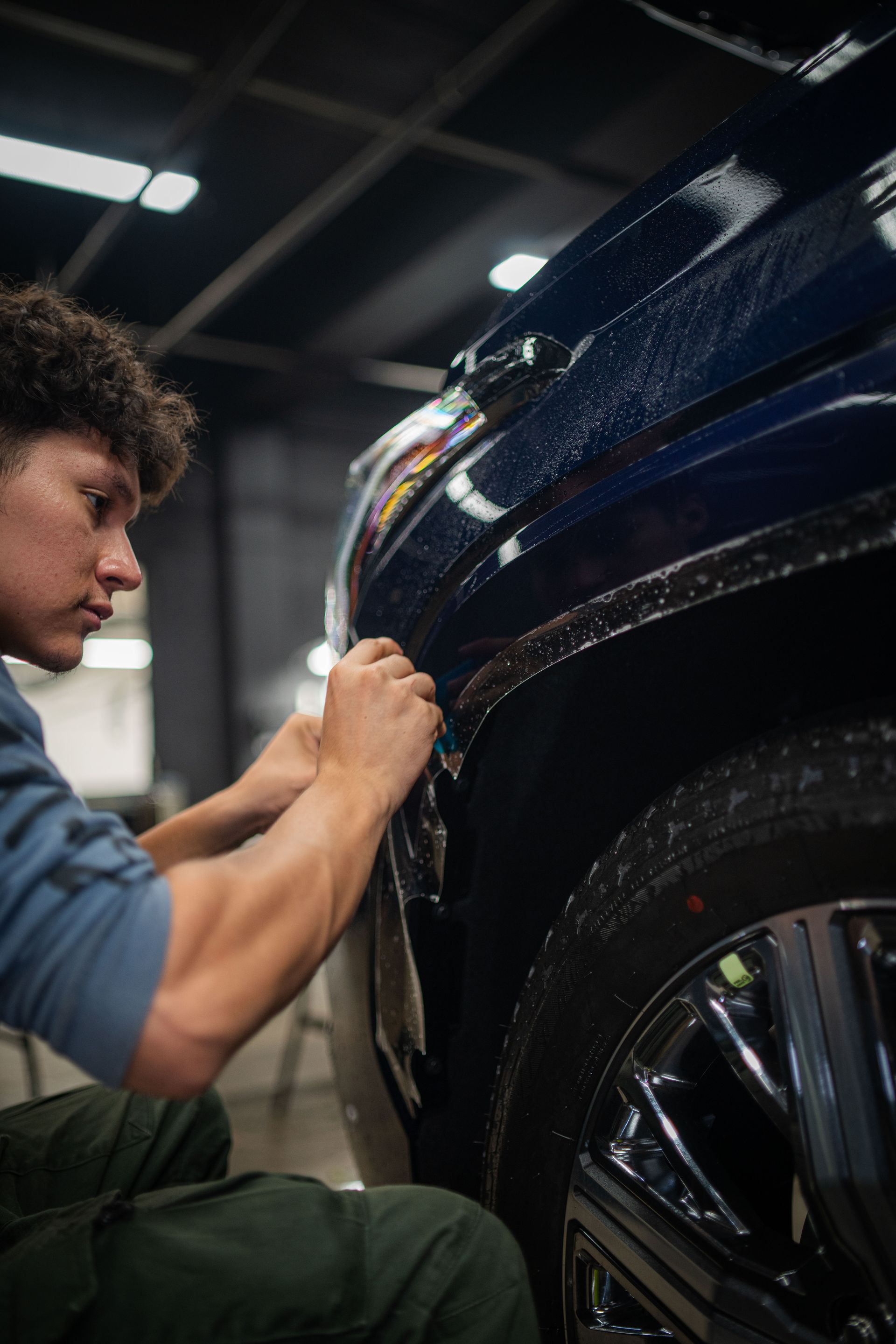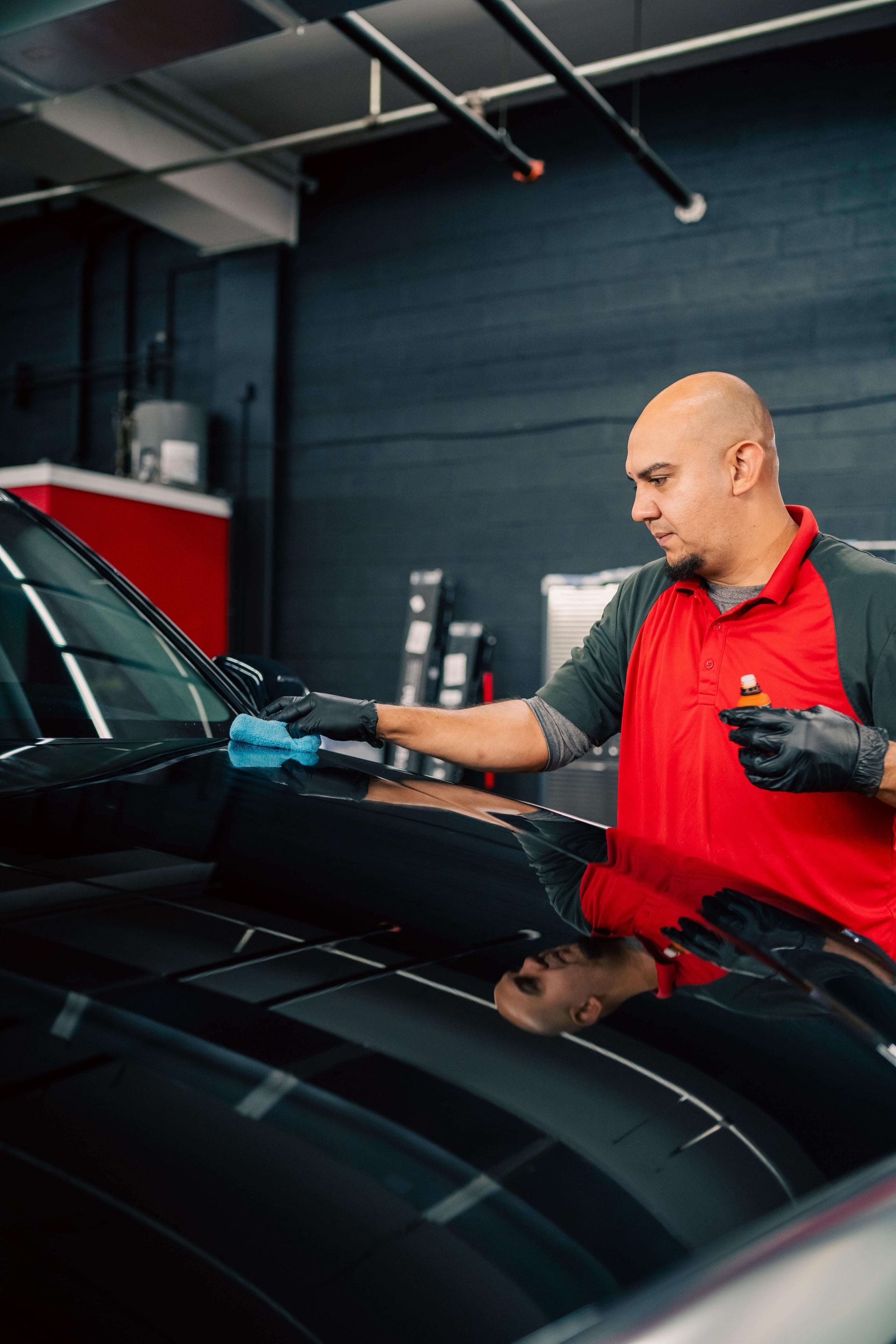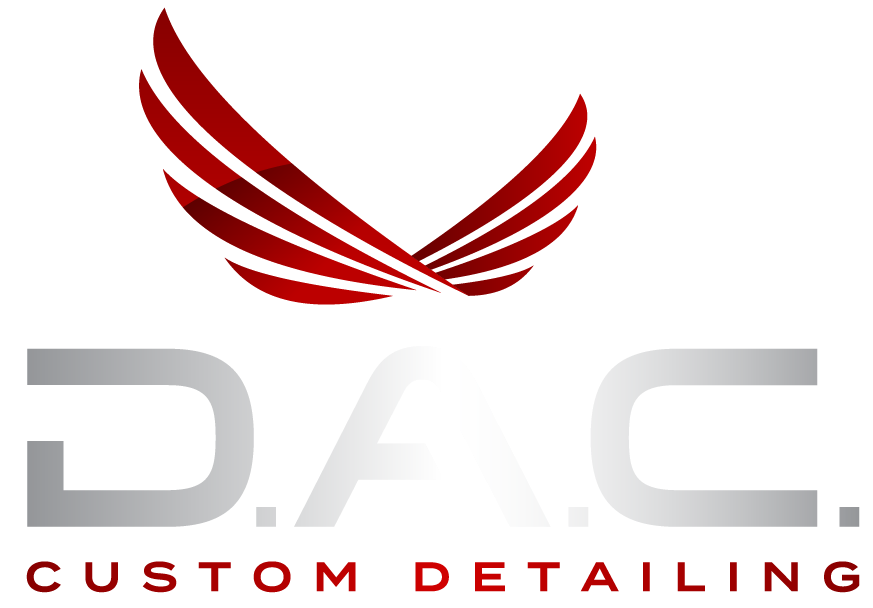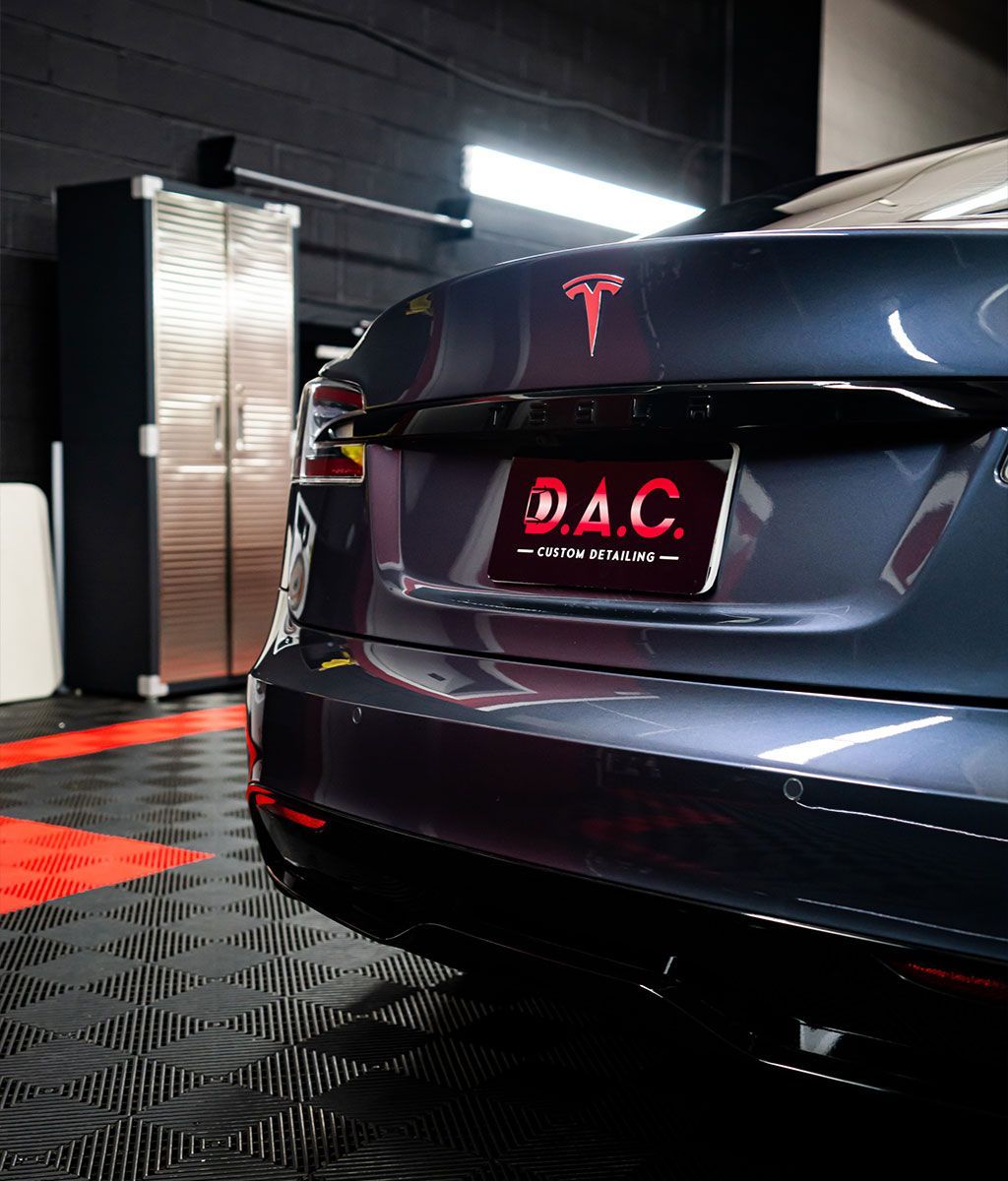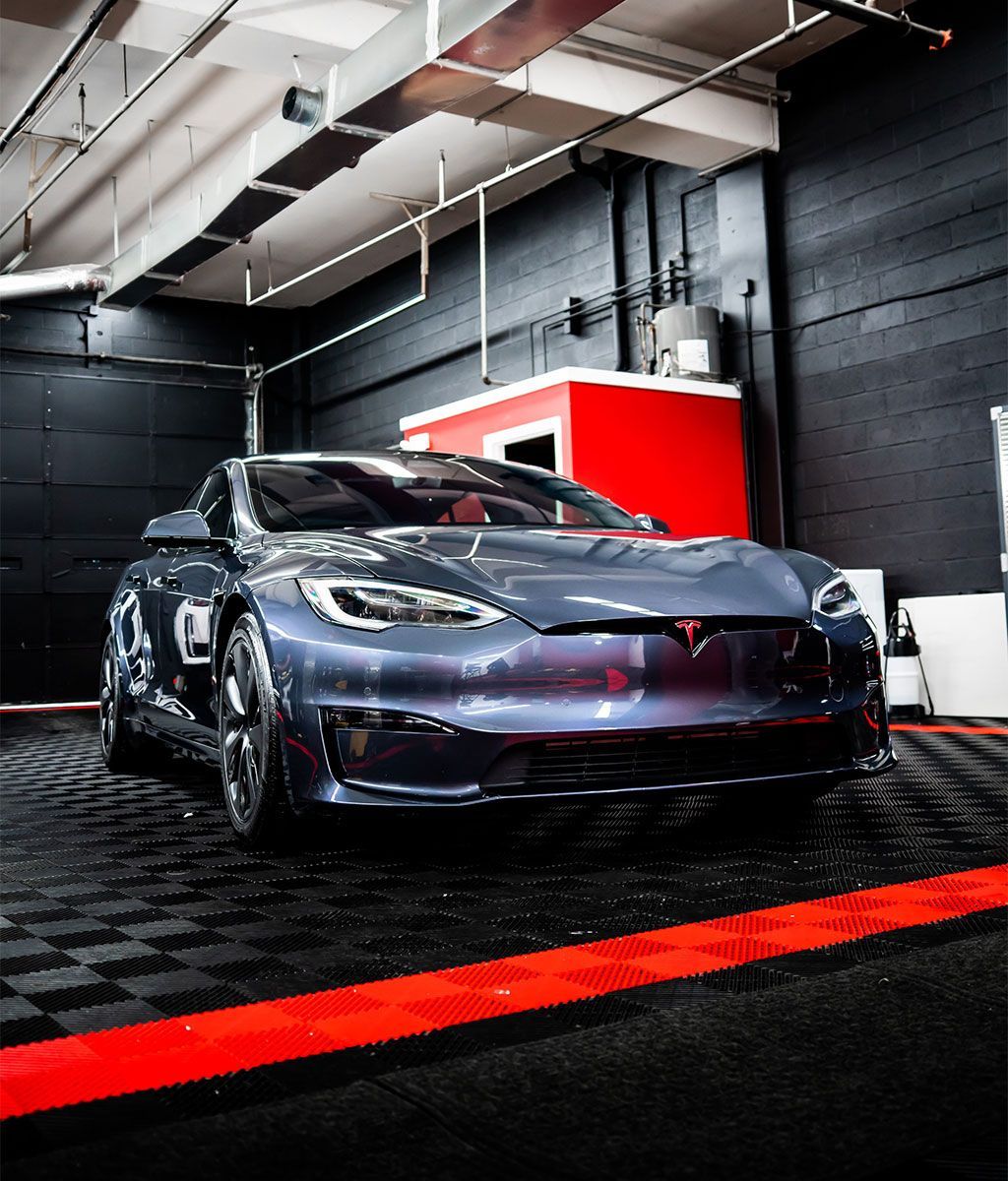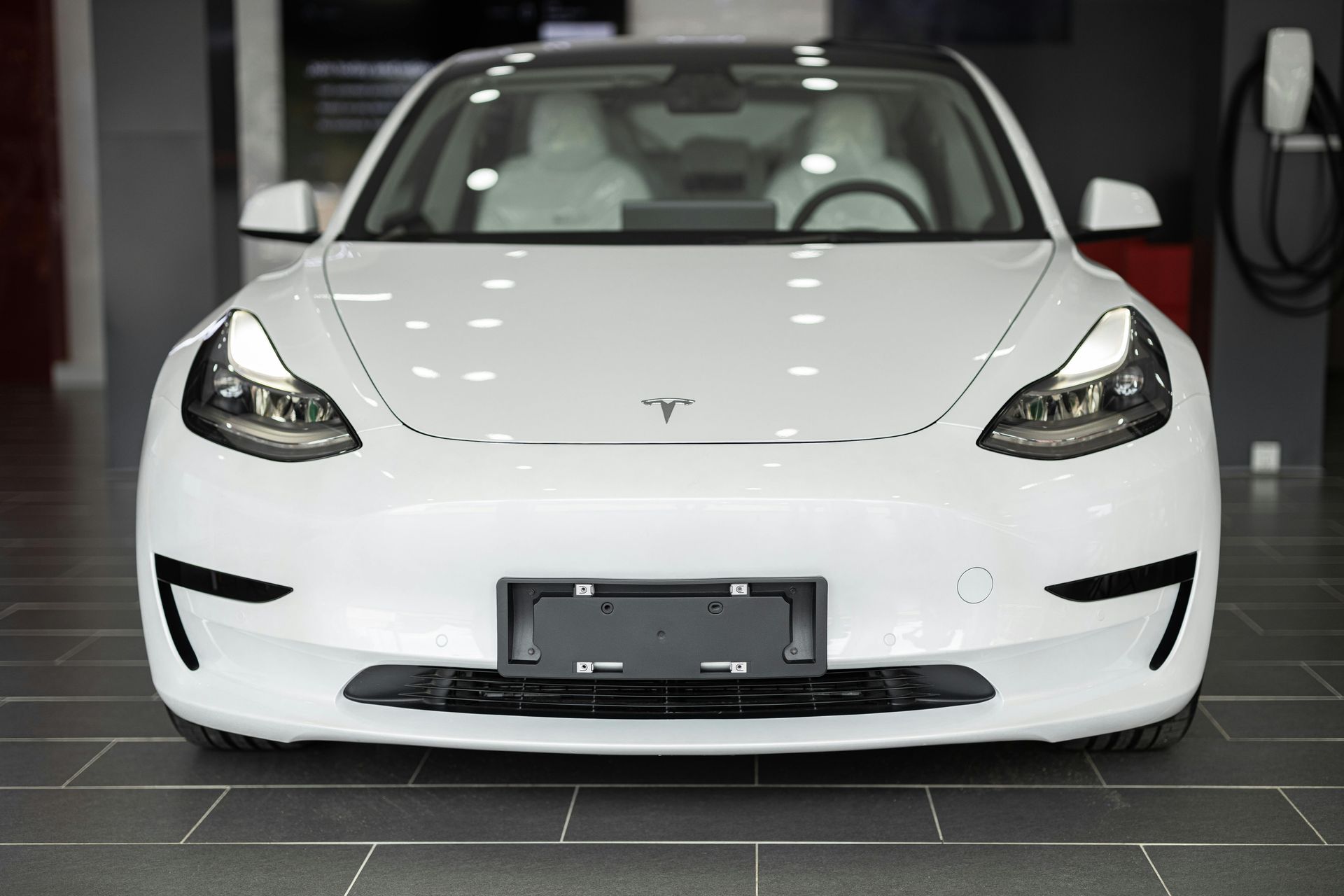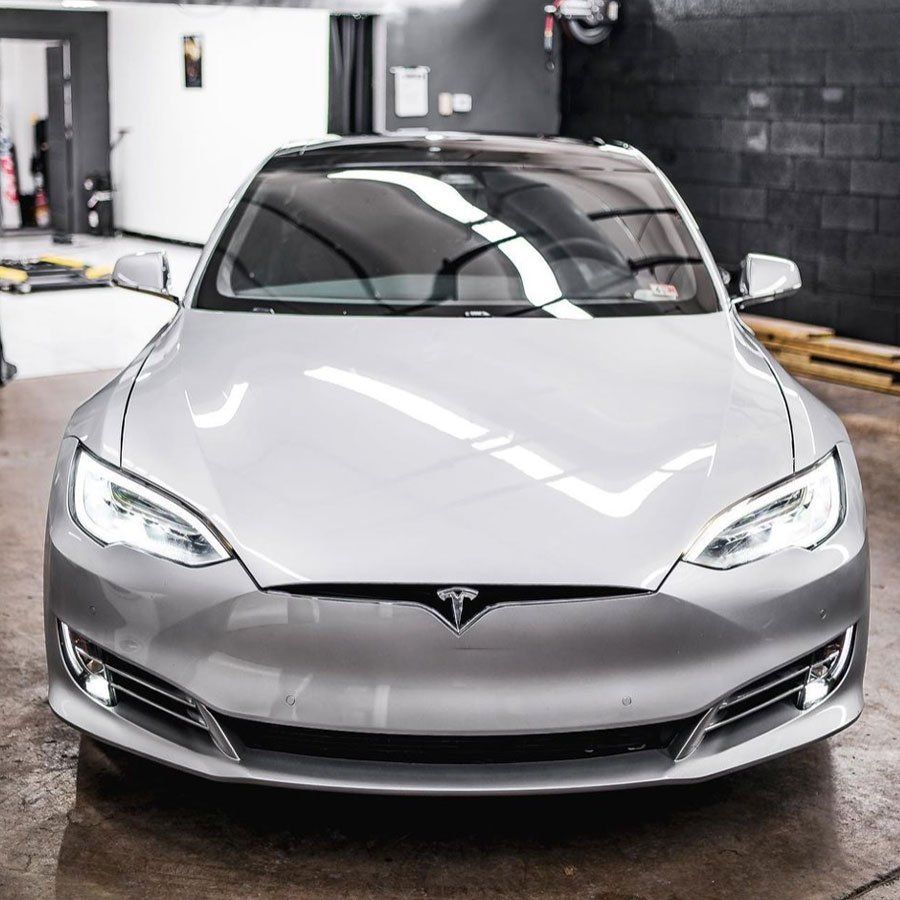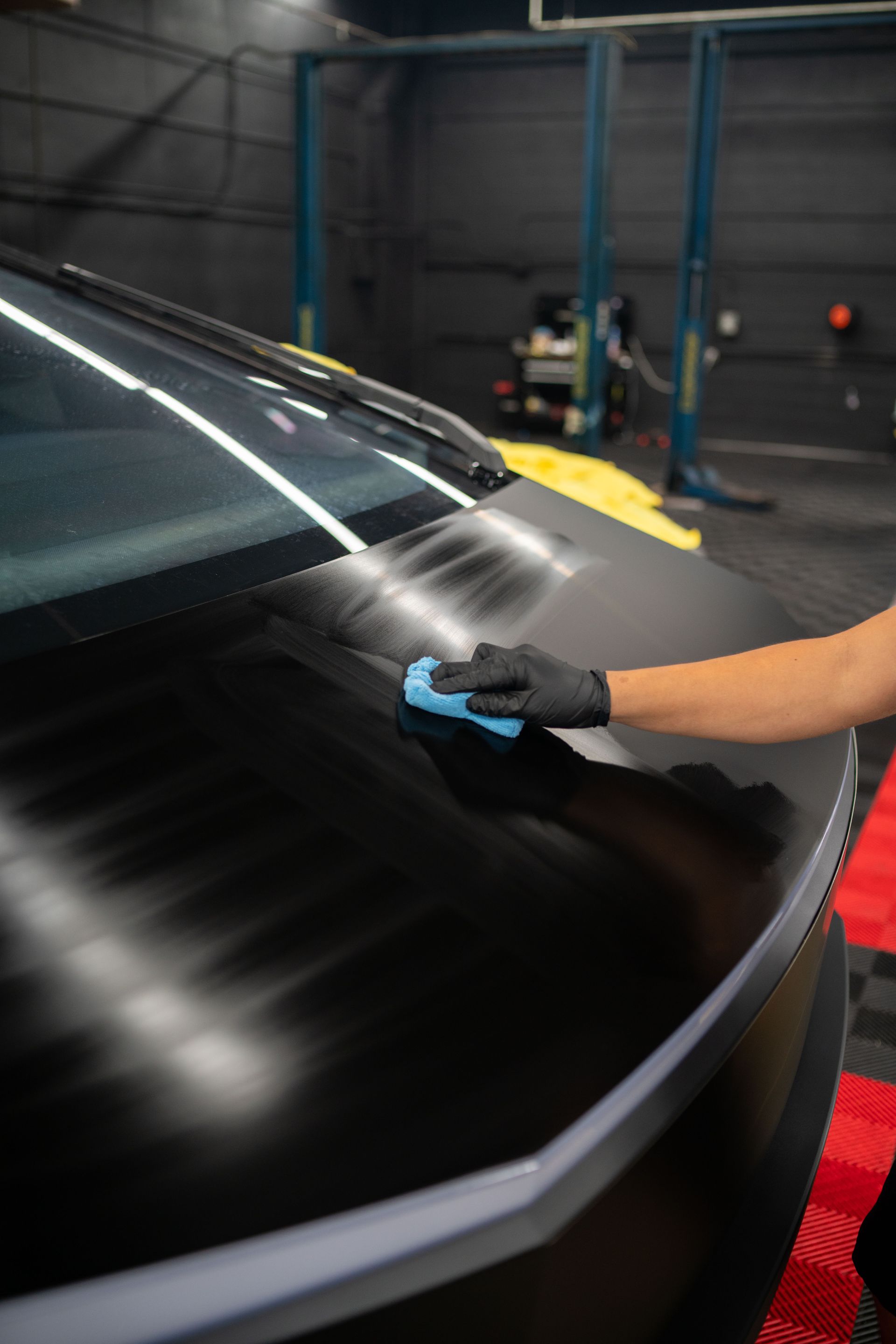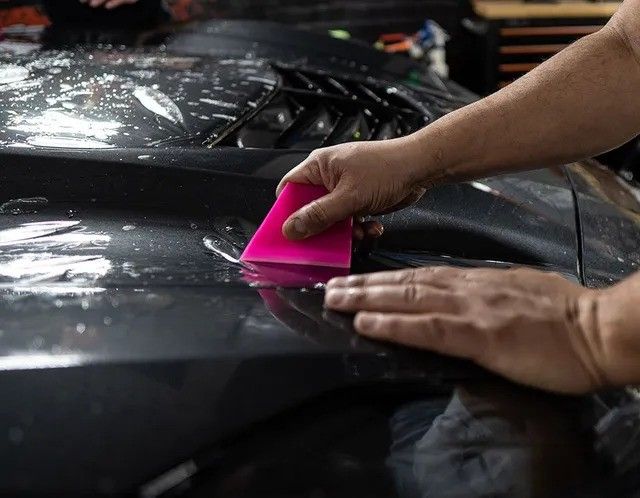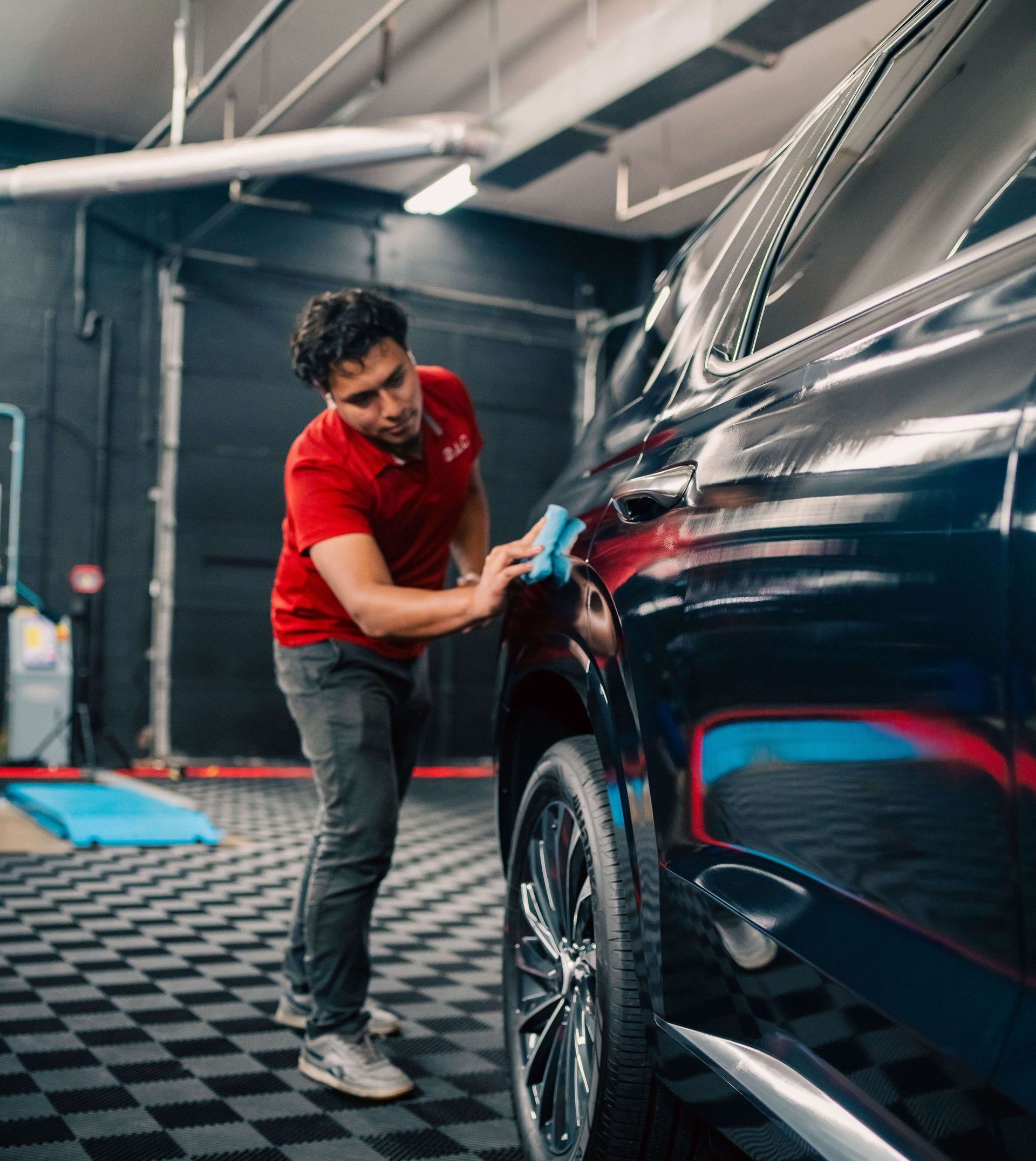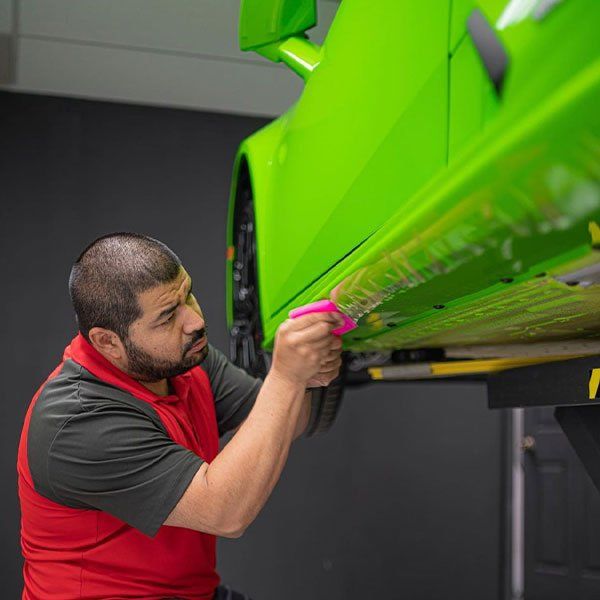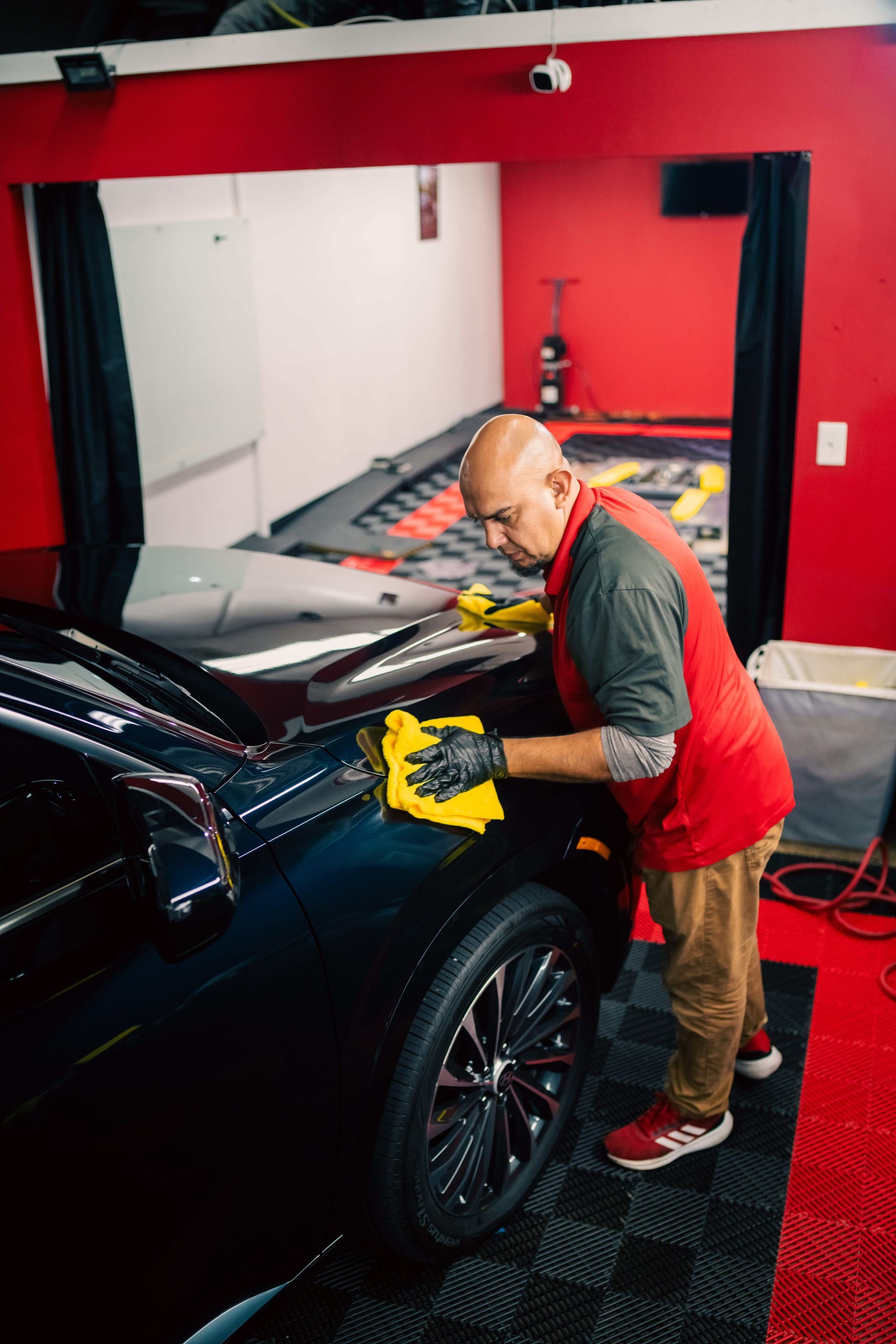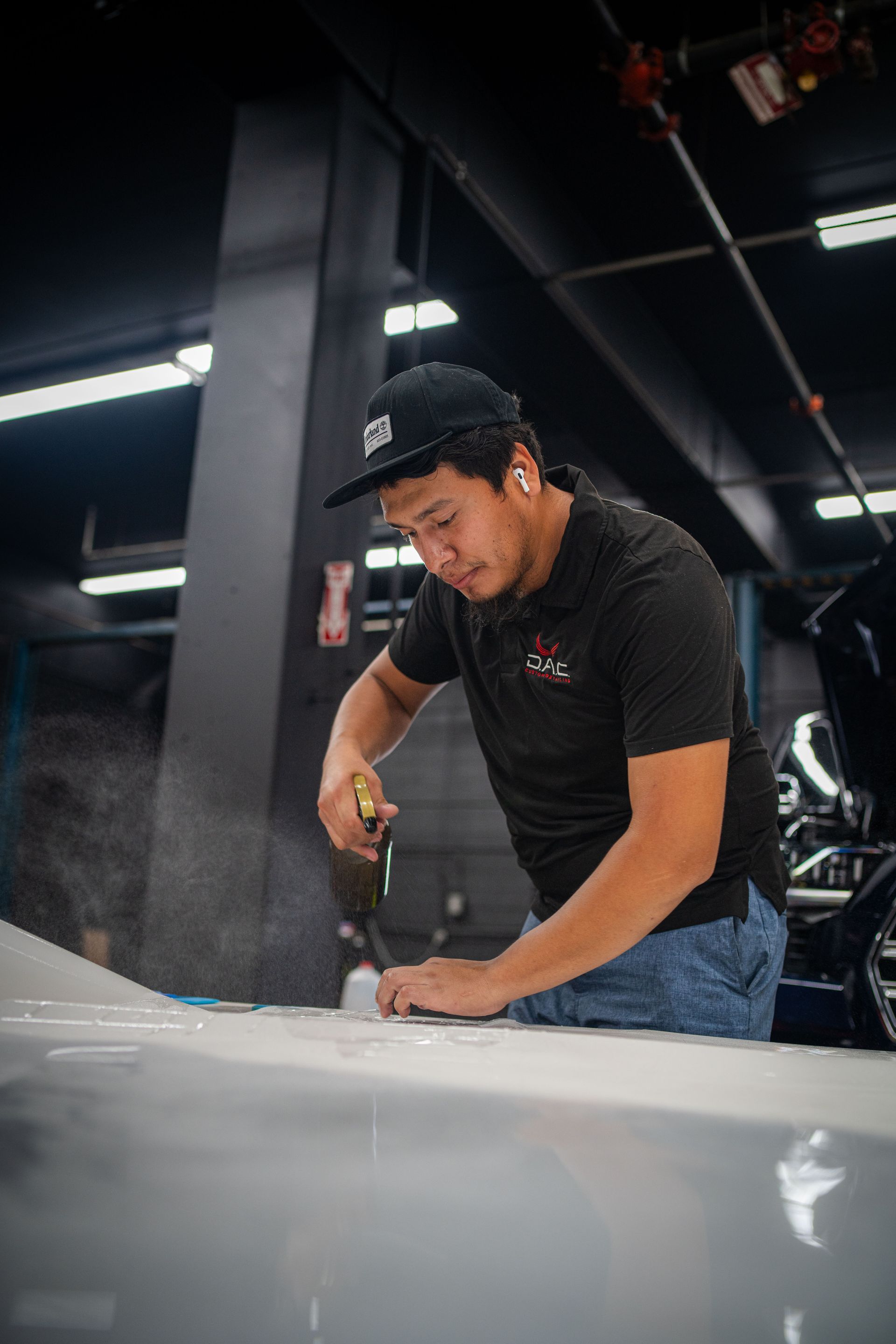REVIVE, PROTECT, MAINTAIN
When you find yourself driving a Tesla, you may feel a sense of pride in owning a vehicle that combines innovation and style. However, the thrill of your electric ride can be quickly overshadowed by worries about chips, scratches, and other damaging elements lurking on the road. This is where a paint protection film comes into play. Think of it as a shield for your car that guards against daily wear and tear while keeping its appearance fresh and pristine.
The longevity of Tesla paint protection film can vary based on several factors, including the quality of the film used, daily usage conditions, proper care and maintenance, and environmental influences like UV exposure and temperature extremes. Generally, high-quality PPF can last anywhere from 7 to 10 years when cared for properly, making it an effective investment to protect your Tesla's exterior.
What is Paint Protection Film (PPF)?
Paint Protection Film (PPF) is more than just a clear covering; it's like an armor for your Tesla's paint job. This flexible, thermoplastic urethane film acts as a shield against everyday hazards, including scratches, chips, and environmental pollutants. Imagine driving with peace of mind, knowing that small rocks or errant debris won't leave lasting marks on your prized possession. The film essentially preserves the pristine look of your car while enhancing its resale value—a wise investment indeed.
Composition of Paint Protection Film
At its core, PPF consists of multiple layers meticulously engineered to provide maximum protection. The first layer is an adhesive layer, which plays a critical role; it ensures that the film adheres vigorously to the vehicle's surface, preventing it from peeling away over time. Next comes the polyurethane layer, which serves as the heart of the paint protection film—this layer absorbs impacts from external forces like road debris and minor scrapes. Finally, there’s a top coat that usually incorporates self-healing properties; this means that if you happen to get a minor scratch, exposing it to heat can cause these scratches to vanish seamlessly within hours. With an understanding of its composition, let’s explore how this protective film actually shields your vehicle.
How Paint Protection Film Works
Think of paint protection film as your car’s invisible bodyguard. When flying debris threatens your paint job or when pesky branches scratch across during a drive, PPF steps in to ensure the original paint remains intact. It blocks harmful elements before they even touch the surface, so instead of fretting about potential damage after every trip, you can confidently navigate any terrain knowing your Tesla is safeguarded. The beauty of a paint protection film lies not only in its protective qualities but also in how it enhances the aesthetic appeal of your Tesla without compromising its design.
Factors Affecting PPF Longevity
The lifespan of a paint protection film varies based on several key factors that significantly influence its performance over time. Understanding these elements can help you choose the right film for your Tesla and make informed decisions about its care. Below are the critical factors that affect PPF longevity.
- Type of Film: The quality of the paint protection film you select is one of the most crucial factors influencing its lifespan. Premium films from reputable brands can last up to ten years under optimal conditions, providing superior protection against scratches, chips, and other potential damage. In contrast, budget options may only offer three to five years of protection. Weighing the initial investment against long-term durability is essential for making the best choice for your vehicle.
- Environmental Conditions: The environment in which your vehicle is primarily used has a substantial impact on paint protection film longevity. Exposure to harsh elements like intense UV rays, extreme temperatures, and high humidity can accelerate degradation of the film. PPF in high UV environments can degrade up to 15% faster compared to moderate climates. If you live in such conditions, consider protective measures like parking in shaded areas or using a car cover to mitigate damage.
- Usage Patterns: Your driving habits also play a significant role in determining how long PPF will last. Frequent commuting through heavy traffic or long-distance highway driving can subject the film to greater wear and tear than occasional use in less demanding environments. Additionally, debris from other vehicles, such as gravel or stones, can lead to increased abrasion on the PPF surface. Understanding your driving patterns will allow you to adjust maintenance practices accordingly.
- Road Conditions: Regularly monitoring road conditions is vital for extending the lifespan of your paint protection film. If you often drive on unpaved roads or during adverse weather, being proactive about checking for any damage can help you address small issues before they escalate. By staying vigilant about the conditions your vehicle encounters, you can maintain the film’s effectiveness and prolong its life.
The longevity of paint protection film on your Tesla is influenced by the type of film, environmental conditions, usage patterns, and road conditions. By understanding these factors and taking appropriate measures, you can enhance the care and effectiveness of your PPF.
Installation Tips for Maximum Durability
When it comes to protecting your Tesla with paint protection film, proper installation is key to maximizing its longevity and performance. A few essential considerations can make all the difference, ensuring that your vehicle remains safeguarded against everyday wear and tear. Here’s a breakdown of the most important factors to keep in mind during the installation process.
- Seek Professional Installation: Professional installation is critical for achieving optimal performance with your PPF. Certified installers possess the necessary experience and specialized tools to ensure the film is applied flawlessly. They can expertly handle various surfaces and adjust their techniques based on the specific areas of your Tesla. This level of skill results in a bubble-free and crease-free application, providing an unparalleled layer of protection for your vehicle.
- Adhere to Proper Curing Time: After installing your paint protection film, it's essential to allow proper curing time for the best results. Refrain from washing your Tesla for at least a week following the application, as this waiting period enables the film to settle and bond fully to the vehicle's surface. A robust bond is crucial for the paint protection film to withstand everyday wear and tear, ensuring long-lasting protection.
- Consider Temperature During Installation: Temperature plays a significant role in the paint protection film installation process. It's best to perform the installation in a controlled environment where the ambient temperature is between 70°F and 80°F (21°C to 27°C). Extreme temperatures can adversely affect the adhesive properties of the film, leading to premature lifting or bubbling. Additionally, ensuring that your car's surface is at an appropriate temperature contributes to a smooth and effective application.
- Ensure a Thorough Cleaning Before Application: A clean surface is vital for proper paint protection film adhesion. Any dirt, dust, or residues can cause imperfections and diminish the effectiveness of the film. Use a mild soap and a microfiber cloth to eliminate contaminants without damaging your Tesla’s paint. Manufacturers often recommend allowing a curing time of 24 to 48 hours post-installation, during which your vehicle should be kept away from moisture and harsh elements.
By keeping these essential tips in mind, you not only enhance the chances of a successful PPF installation but also gain peace of mind regarding the durability and effectiveness of your paint protection.
Maintaining Your Tesla's PPF
Even the best paint protection film (PPF) needs regular maintenance to stay effective. This entails not just keeping the film clean but also being attentive to its overall condition so that it can defend your Tesla’s exterior effectively. The manner in which you clean and inspect your PPF can significantly influence its lifespan and performance, making maintenance a vital factor for all Tesla owners.
- Regular Cleaning: When it comes to cleaning, using mild soaps is crucial. Harsh chemicals can compromise the integrity of the film over time and lead to early degradation. Opt for pH-neutral car soaps that are specially formulated for this purpose. While washing, use soft microfiber cloths; they are gentle on the surface and significantly reduce the risk of scratching compared to traditional towels. Quick Note: Avoiding automatic car washes is another important consideration. Instead, hand wash your vehicle with care and attention.
- Inspect for Damages: Make it a habit to regularly check the PPF for any signs of lifting or damage. Areas around the edges often need special attention, as these spots tend to be more vulnerable. Should you find any issues, addressing them promptly can prevent further deterioration. A simple application of heat from a heat gun can sometimes re-adhere minor lifts; however, if you’re uncertain about repairs, consulting a professional is always wise. Beyond your routine cleaning and inspection practices, you might consider enhancing your PPF’s performance even further.
- Ceramic Coating: Adding a ceramic coating on top of the paint protection film not only enhances the glossy finish but also adds an extra protective layer against contaminants like dirt and grime. This layer makes cleaning easier and contributes additional resistance against UV damage and potential damages from chemical and environmental contaminants. After applying a ceramic coating to a Tesla's paint protection film, muddy water beads up rather than clinging to the surface, which saves time during wash days.
Evaluating the Cost Vs. Benefits
Deciding if paint protection film is worth the investment involves assessing the cost against its benefits, especially when preserving the aesthetics of your vehicle matters so much. While it's easy to be deterred by the initial expense—ranging from $1,000 to a whopping $5,000—the long-term advantages often outweigh the financial commitment.
Cost Analysis
Although this upfront investment may seem steep, consider what you’re saving in both time and money down the road. For instance, having paint protection film on your Model Y can significantly reduce or even eliminate costly paint repair jobs that come up from scratches or environmental damage caused by UV rays or acidic bird droppings. A simple scratch could cost hundreds to rectify at a body shop, making even partial coverage with PPF a financially wise decision over time. Beyond just protecting against surface damage, the durability offered by reputable brands plays a crucial role in justifying the expenses associated with paint protection film installation. Most options on the market include warranties that can last up to ten years—an assurance that your vehicle's paint is protected for thousands of miles down the line.
Benefits
The benefits of applying paint protection film extend well beyond merely preserving the car’s original paint job. For Tesla owners looking at resale value, having a pristine exterior signals potential buyers that they are investing in a vehicle that has been cared for meticulously. This protects their investment and can lead to better offers when it comes time to sell. Additionally, regular touch-ups can become a thing of the past once you've installed PPF—it dramatically lowers upkeep since it shields against chips and scratches that usually require those annoying trips to detailing services. Many modern films come equipped with self-healing properties; minor scratches can magically disappear with just heat from sunlight or warm water.
Top PPF Services in Washington, D.C.
Transform your Tesla's appearance and safeguard its finish with
top-tier paint protection film services from D.A.C. Custom Detailing in
Washington, D.C. Our expert team specializes in high-quality installations that provide unmatched protection against road debris, scratches, and environmental damage, ensuring your vehicle remains in pristine condition. Experience the ultimate peace of mind with our advanced paint protection film solutions, designed to maintain your car's aesthetic while enhancing its durability. Discover how D.A.C. Custom Detailing can protect your investment today! Call us at (703) 298-1864 to get started!
Share with friends
